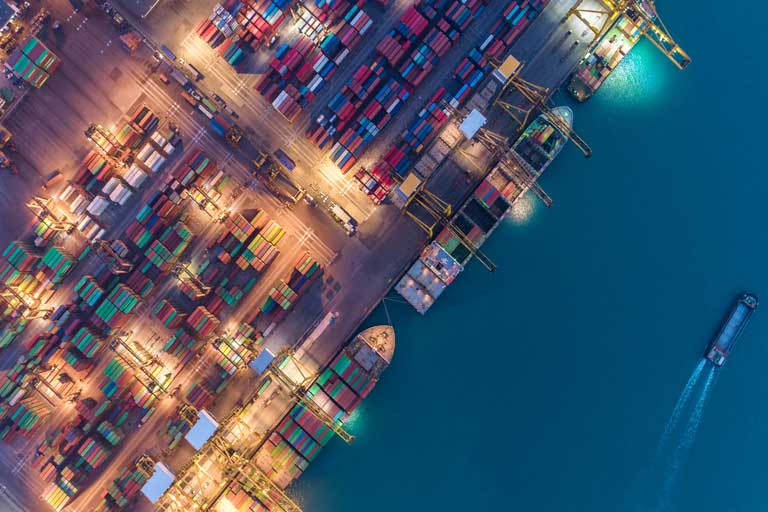5 Reasons Why SMEs Should Look To Intra-Asia Trade
Whether times are tough or business is booming, Intra-Asia offers immense opportunities for the region’s SMEs and e-commerce operators to unlock new business growth.
Asia has long been a world leader in regional integration, forging remarkable, ever-adapting networks in trade, investment and innovation. Despite the diversity of people and culture, our region forms a close-knit economy sharply focused on international business opportunities.
It’s those long-standing ‘inside Asia’ relationships that give this region the edge. Looking closer to home for growth opportunities does have its advantages, especially in times of global uncertainty.
Check out our five reasons why SMEs should look to Intra-Asia below:
Deepening intra-regional trade – where countries focus on cross-border commerce with neighboring countries rather than those on the other side of the world – now accounts for more than half of Asian trade. After the pandemic, strong regional trade bolstered economic bounce-back, and Intra-Asia trade rose to the highest levels in three decades.
We’ve also seen a major shift, with Asia moving from its role as goods manufacturer to a mass-consuming market. The “Asia-12” are leading this momentum: Australia, China, Hong Kong, Indonesia, Japan, Malaysia, Philippines, Singapore, South Korea, Taiwan, Thailand, and Vietnam. According to Access Partnership, trade among the Asia-12 could double to USD 13.5 trillion in 2030.
And India, China and ASEAN are slated to be key players in intra-Asia trade. Asian and South East Asian manufacturing still offers attractive, cost-effective options not just for Asian businesses, but for those in the U.S. and Europe too. This has a positive economic knock-on effect for markets like Vietnam, Singapore, and Malaysia. These manufacturing hubs previously existed to support or even service China. They’re now producing for global customers, and far less vulnerable to China’s economic downturn.
RELATED: Why your business should look to Southeast Asia manufacturing
The difference is that supply chain networks have shifted. Decentralized, more complex and more agile than ever before, businesses that optimize their supply chain and manufacturing networks improve the robustness of their business. And as supply chain bottlenecks at seaports continue, Intra-Asia trade that relies on air cargo is also less likely to be disrupted.
It’s those long-standing ‘inside Asia’ relationships that give this region the edge. Looking closer to home for growth opportunities does have its advantages, especially in times of global uncertainty.
Check out our five reasons why SMEs should look to Intra-Asia below:
1. Intra-Asia trade remains resilient
Deepening intra-regional trade – where countries focus on cross-border commerce with neighboring countries rather than those on the other side of the world – now accounts for more than half of Asian trade. After the pandemic, strong regional trade bolstered economic bounce-back, and Intra-Asia trade rose to the highest levels in three decades.
We’ve also seen a major shift, with Asia moving from its role as goods manufacturer to a mass-consuming market. The “Asia-12” are leading this momentum: Australia, China, Hong Kong, Indonesia, Japan, Malaysia, Philippines, Singapore, South Korea, Taiwan, Thailand, and Vietnam. According to Access Partnership, trade among the Asia-12 could double to USD 13.5 trillion in 2030.
And India, China and ASEAN are slated to be key players in intra-Asia trade. Asian and South East Asian manufacturing still offers attractive, cost-effective options not just for Asian businesses, but for those in the U.S. and Europe too. This has a positive economic knock-on effect for markets like Vietnam, Singapore, and Malaysia. These manufacturing hubs previously existed to support or even service China. They’re now producing for global customers, and far less vulnerable to China’s economic downturn.
RELATED: Why your business should look to Southeast Asia manufacturing
The difference is that supply chain networks have shifted. Decentralized, more complex and more agile than ever before, businesses that optimize their supply chain and manufacturing networks improve the robustness of their business. And as supply chain bottlenecks at seaports continue, Intra-Asia trade that relies on air cargo is also less likely to be disrupted.

2. In times of global uncertainty, Asia may still be on track to outperform other regions
2023 was a tricky year for Asia and the rest of the world. Inflation, spiraling interest rates, geopolitical tensions and China’s slow recovery meant that economies were shaky. Key ASEAN nations, however, managed to maintain firm growth as resilient domestic demand bolstered their economies , including Indonesia, Malaysia, Philippines, Singapore, Thailand and Vietnam.
And some forecasters are predicting a much stronger 2024 for Asia Pacific, which is expected to outperform overall global economy growth this year. In 2024, the IMF has forecast 4.2% growth in APAC, compared to just 2.9% globally.
For emerging Asia countries, the IMF has actually revised up its previous forecast, predicting emerging and developing Asia to grow by 5.4%.
Economies overall have been boosted by the rise in e-commerce, and online retail both domestically and inside Asia will continue to be an important factor in the long term. Shorter, recovering supply chains are stepping up to support the Intra-Asia market, giving Asian start-ups and small businesses one of the best market environments to operate in.
In addition, economies like Singapore, Korea and Japan stand out as among the most digitally advanced anywhere. Take, for example, Asia’s flourishing digital ecosystem in payments – driven by e-payment platforms and a move to cashless economies.

3. APAC exporters still highly competitive, and start-ups drive future growth
With a business culture fueled by technology and innovation, small companies and start-ups are core to future growth in Asia. Asia Pacific accounts for the second highest number of unicorns – privately held companies worth more than US$1 billion - worldwide, but tops the list in market valuation.
Yes - Asia is already home to some of world’s fastest growing companies.
Start-ups, SMEs and enterprises can tap new growth opportunities by exploring fresh possibilities closer to home. This is already being seen in the huge growth in Asian B2B cross-border commerce. Asia-Pacific is way out front, dominating almost 80% of the B2B market.
4. Asia’s growing middle class are tomorrow’s savvy consumers
Forming the all-important consumer base for future intra-Asia business growth is a rapidly growing Asian middle class. These customers have a huge appetite for imports from other countries within Asia Pacific. Just a decade ago, the middle class was spread fairly evenly around the world, with 525 million residing in Asia. But by 2030, Asia will make up two-thirds of the global middle-class population – a staggering 1 billion.
Within this demographic, many are digital natives who seek an increasingly personalized customer experience that is mobile-first and social media-centric.

As technology makes online commerce more accessible to people, even in smaller domestic markets such as Singapore and Malaysia, businesses must seize opportunities to get online and meet consumer demand.
Whether it’s beauty products, medical supplies or electronics, all roads lead to Asia. And Asia could still reach 50% of global GDP by 2040 and drive 40% of the world’s consumption, representing a real shift in commercial opportunity for the region’s businesses.
Intra-Asia volumes also look poised to hold firm thanks to Asia-focused trade pacts such as the Regional Comprehensive Economic Partnership (RCEP) which was recently ratified in Philippines, and the Comprehensive and Progressive agreement for Trans-Pacific Partnership (CPTPP), which brings together 11 countries in the Asia Pacific region. Head here to find out more about the trade deals Asia’s businesses can take advantage of.
If you’re seeking opportunities across Asia Pacific, we can help. Visit our dedicated Small Business Center for the latest tips and insights on trading cross-border.
And for shipping promotions to help get your business off the ground, head here.
5. Better connections will boost intra-Asia volumes further
Whether it’s beauty products, medical supplies or electronics, all roads lead to Asia. And Asia could still reach 50% of global GDP by 2040 and drive 40% of the world’s consumption, representing a real shift in commercial opportunity for the region’s businesses.
Intra-Asia volumes also look poised to hold firm thanks to Asia-focused trade pacts such as the Regional Comprehensive Economic Partnership (RCEP) which was recently ratified in Philippines, and the Comprehensive and Progressive agreement for Trans-Pacific Partnership (CPTPP), which brings together 11 countries in the Asia Pacific region. Head here to find out more about the trade deals Asia’s businesses can take advantage of.
If you’re seeking opportunities across Asia Pacific, we can help. Visit our dedicated Small Business Center for the latest tips and insights on trading cross-border.
And for shipping promotions to help get your business off the ground, head here.
***

















 The Latest
The Latest